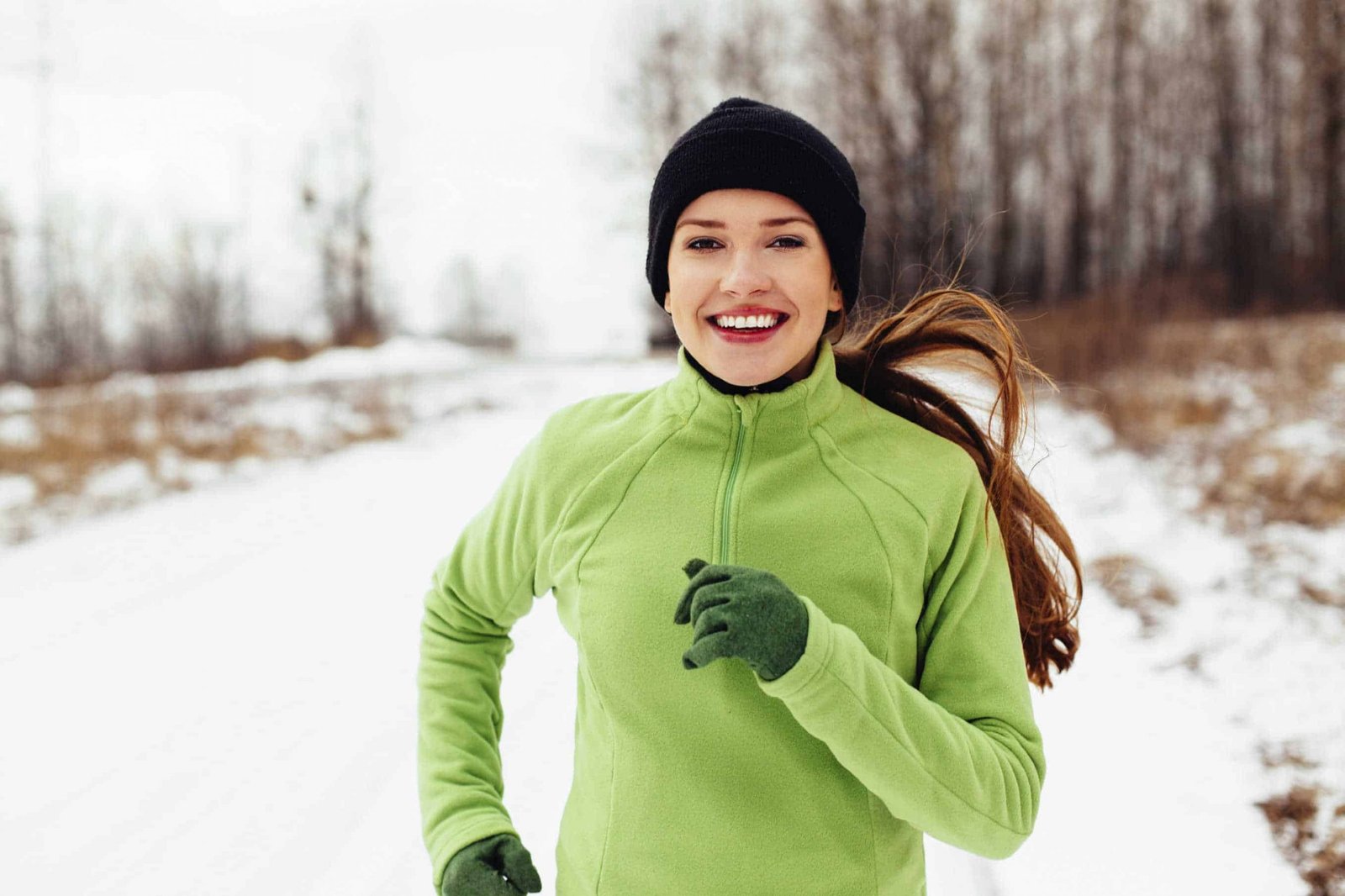Winter Fitness Safety Tips for Shredding Calories in the Cold.
 No need to let dropping temps slow down your fitness routine. Follow these cold-weather fitness guidelines and enjoy an exhilarating, calorie burning, mood-boosting winter workout!
No need to let dropping temps slow down your fitness routine. Follow these cold-weather fitness guidelines and enjoy an exhilarating, calorie burning, mood-boosting winter workout!
Check the thermometer. Check the air temperature and wind chill factor before you leave your home. If you’re properly dressed, it’s safe to exercise if the temperature is as low as 20 degrees, even with a 30 mph wind, according to the National Safety Council. Danger to exposed skin occurs when the wind chill factor falls below minus 20 degrees.
Layer wisely. Wear fewer, thinner layers of clothing you can peel off, rather than one single, heavy layer; cool down gradually after your workout by taking off a layer at a time.
Wear breathable fabrics. Choose breathable fabrics to avoid sweat build-up that makes you feel colder.
Start slowly. Until you’ve mastered cold-weather fitness, start your workout at half your usual warm-weather distance; if you normally run six miles, start with three.
Warm up indoors before heading out. Running in place or jumping rope for five minutes inside makes it less likely you’ll strain a muscle outside.
Wear sunscreen. Make sure you protect your skin, especially if you exercise near snow, which reflects sunlight. Even though the sun isn’t beating down on you with heat, it can still cause sunburn and sun damage.
Pay attention to your body temperature. Don’t ignore the warning signs that you may be cold. Symptoms of frostbite include numbness, loss of feeling or a stinging sensation. If you suspect frostbite, get out of the cold immediately and slowly warm the affected area. Do not rub, as it can damage skin. If numbness remains, see a doctor.
Enjoy an afternoon workout. Even if you thrive on early-morning workouts, on extremely cold days consider exercising late afternoon, when temps are highest and the roads are more likely to be plowed.
Map warmer routes. Avoid open spaces and paths near water to reduce exposure to biting winds.
Stay dry – even after you sweat. Get out of damp clothes as soon as possible, even if you cannot shower immediately, and change into dry clothes.
Stay hydrated. You don’t see sweat losses in the winter as much as you do in summer, however, you can still sweat just as much. Try putting your water bottle under your layers to keep it from freezing.
Cool—don’t freeze—down. To avoid getting too chilled during your cool down, keep it brief. Slow your pace for three to four minutes, then go inside to stretch. Take off your extra layers and keep moving for an additional 10 minutes before your shower.
Check with your doctor. As with any new fitness routine, seek the advice of your medical provider before beginning; if you’re prone to breathing difficulties or exercise-induced asthma, ask your doctor about using an inhaler or the use of oral asthma medications.
Winter workouts are great for shredding calories! Did you know? Cold air forces you to work to overcome some of your bodies natural changes when combating the cold, so your body makes up for it by burning more fat.
As with any time of the year, mixing up your workouts can make them more fun! Here are a few popular winter-weather activities with estimated calories burned when performed for 30 minutes:
Ice skating: 30 Minutes burns 250 calories.
Cross country skiing: 30 Minutes burns 250 calories.
Downhill skiing: 30 Minutes burns 150 calories.
Walking: 30 Minutes burns 100 to 150 calories.
Tobogganing: 30 Minutes burns 216 calories.
Christmas Shopping: 30 Minutes burns 89 calories.
And don’t forget to wear a hat, scarf and gloves!
Bonus Tip: After you enjoy your winter workout, boost your natural recovery with a MyoBuddy massage! Percussive massage is a great way to treat aches and pains and assist with recovery, mobility and circulation. And it feels great!






